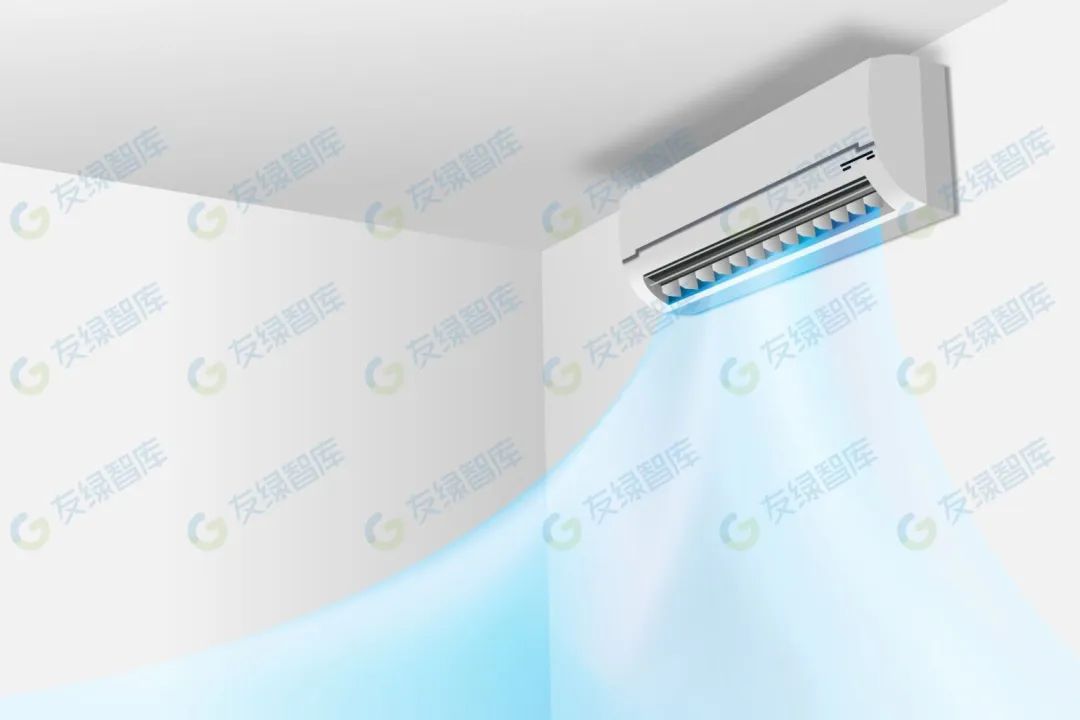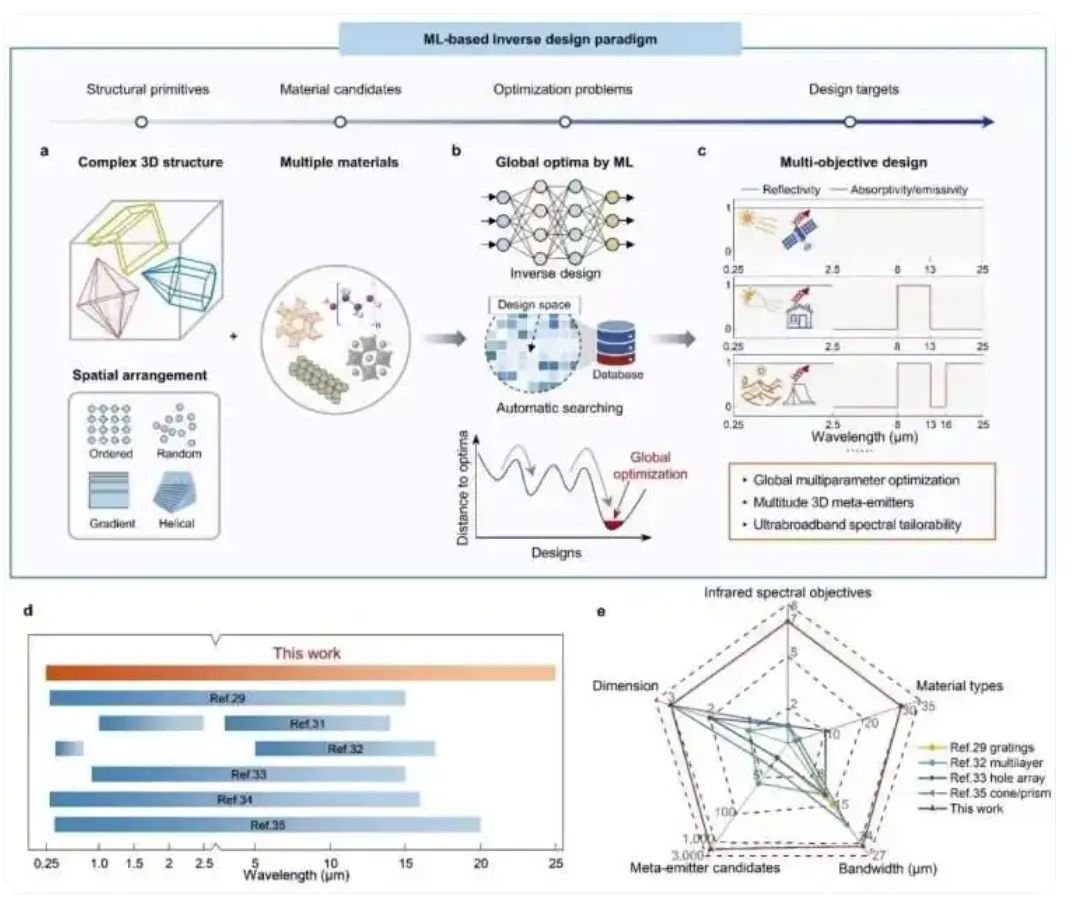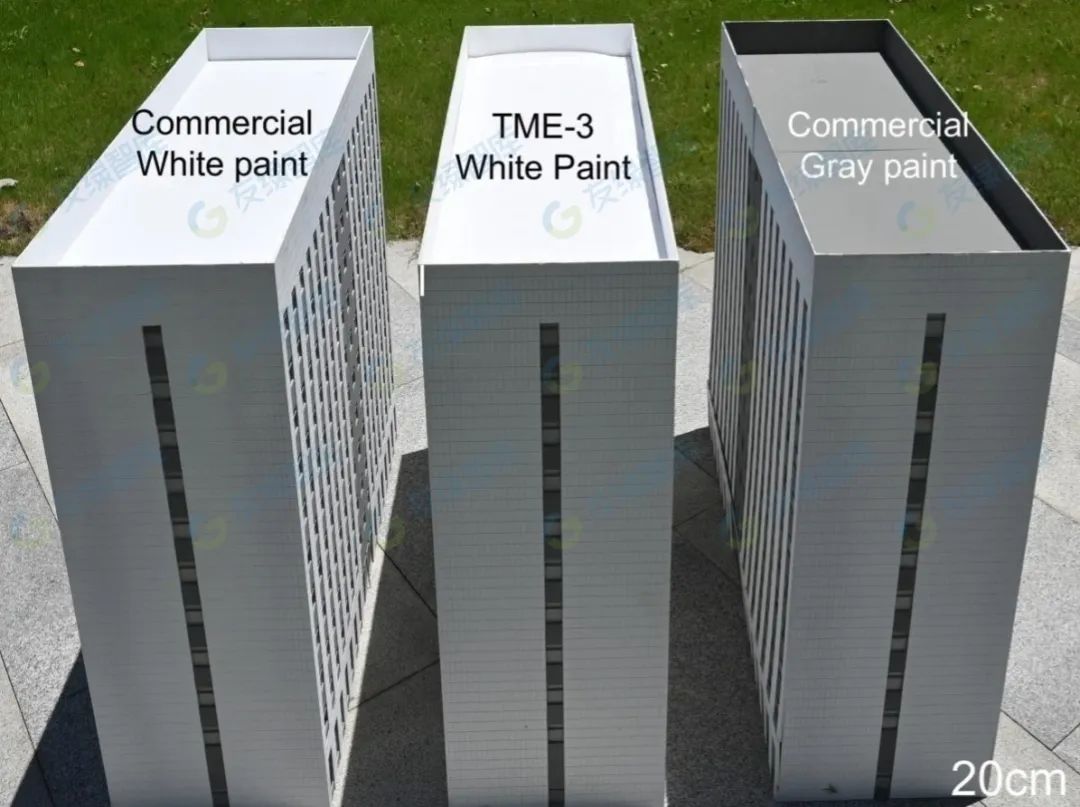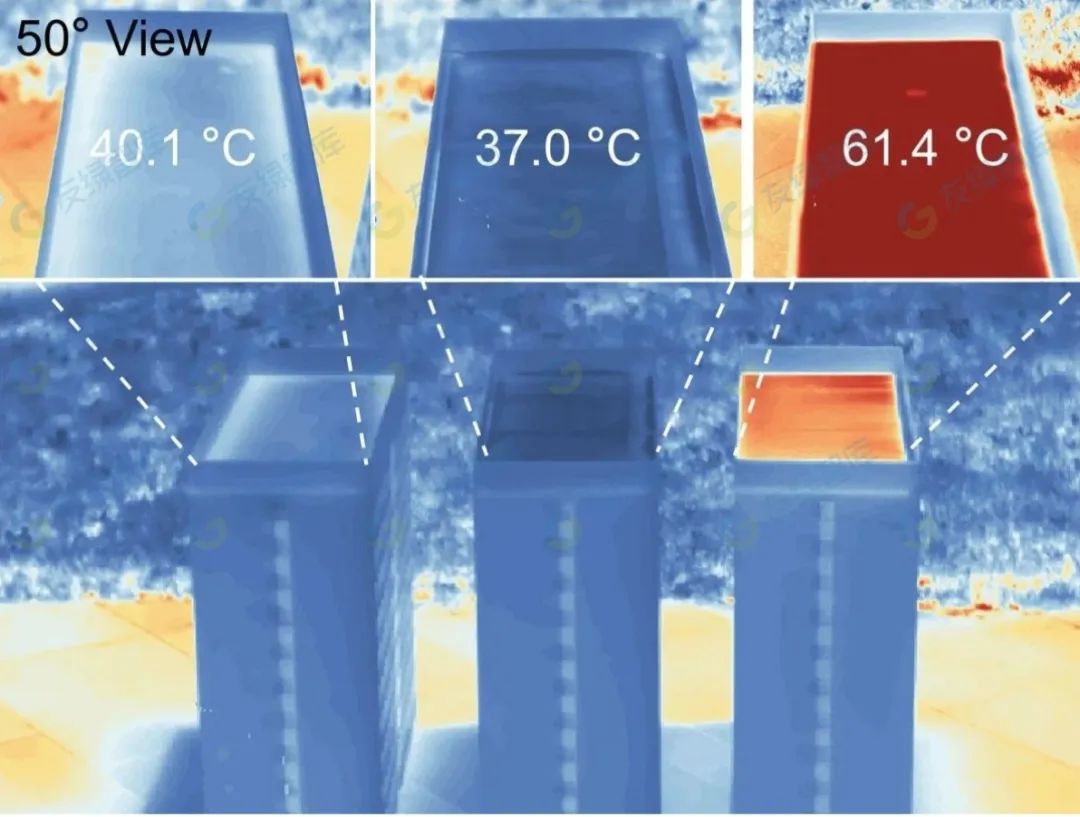Zero carbon technology: AI + Metamaterials for Building Cooling and Significant Energy Consumption Reduction

DOI: 10.1038/s41586-025-09102-y
It is expected that the building exterior walls can achieve "zero energy consumption cooling," and citizens' clothing can be cooled by 3-5 degrees with one click. This will also provide temperature control solutions for extreme environments such as aerospace and desert areas. On July 2, a team from Shanghai Jiao Tong University led the results published in Nature, achieving a significant original breakthrough in the field of AI thermal radiation metamaterials, bringing revolutionary new cooling solutions.

Researchers use machine learning to create complex thermal radiation metamaterials that can selectively adjust their heat emission, providing a new paradigm for passive cooling. In prototype testing, these AI-designed materials significantly outperform traditional paints in cooling effects on model rooftops under direct sunlight, potentially saving a substantial amount of energy.
Materials designed by AI have better cooling effects and are more energy-efficient than paint.
Traditional metamaterial design is like "feeling your way through a maze" and relies on experience and trial-and-error. The traditional method requires astronomical amounts of time to screen 50,000 schemes, while the research team's AI model completed this task in just three months through deep learning, identifying nearly 1,500 candidate designs that approach the ideal state, and then further selecting the best options among them. These materials can selectively dissipate heat in a controlled manner, providing higher precision in heating and cooling, thus improving energy efficiency.

The machine learning framework developed by the research team represents a significant leap in the design of thermal radiation metamaterials. By automating processes and expanding the design space, it can create materials with exceptional performance that were previously unimaginable.
This AI model can not only "invent" new materials but also select those that are more suitable for large-scale use and have lower costs among the supermaterials. Taking typical dual-band selective supermaterials as an example, this material can be prepared at room temperature using a simple solution method and can be directly applied to the surfaces of common objects such as brick walls, metals, plastics, and glass in the form of a coating, just like applying sunscreen and cooling cream to objects.
Cooling tests show significant energy savings.
The team designed four types of thermal radiation metamaterials for specific applications using AI models and validated them through human experiments, including broadband thermal radiation metamaterials, single-band selective, and dual-band selective thermal radiation metamaterials. The actual application forms also cover various types such as flexible films, coatings, and patches.
One type of material was applied to the roofs of model houses and compared with standard commercial white and gray paints to evaluate its cooling capability. After four hours of direct noon sunlight, the roofs coated with the super-emissive material were on average 5 to 20 degrees Celsius lower than those coated with traditional paint.
Based on this performance, the team estimates that this cooling method could save about 15,800 kWh annually for apartment buildings in hot cities like Rio de Janeiro or Bangkok, while a standard air conditioning unit typically consumes about 1,500 kWh per year.

Researchers tested their ultra-emissive materials by using them to model buildings and placing them in the sun to measure temperature. Image source: The University of Texas at Austin.
The potential uses of these materials far exceed the scope of energy conservation in residential and commercial settings. Using the same machine learning methods, the team created seven categories of materials, each tailored for specific functions.
These materials can be used in urban areas to help reduce city temperatures by reflecting sunlight and releasing heat at target wavelengths, potentially mitigating the urban heat island effect caused by dense concrete structures and limited greenery. They can also be used in space applications to help regulate spacecraft temperatures by effectively managing incoming solar radiation and emitted heat.
What is even more exciting is the universality of the material. The new coating can be directly sprayed on brick walls, metal, and glass, and the solution method has a lower production cost. Flexible films and patch samples can already be applied to wearable clothing. Calculations show that in buildings located in mid to low latitude regions, using this material theoretically saves about 20 degrees of electricity per square meter.
Consumer applications in textiles and vehicles
In addition to the applications in this study, thermal radiation metamaterials may become a part of many items we use daily. Integrating them into textiles and fabrics can enhance cooling technologies for clothing and outdoor gear. Wrapping cars with them and embedding them in interior materials can reduce the heat accumulation when they are placed in the sun.
The arduous traditional processes involved in designing these materials hinder their mainstream adoption. Other automation options struggle to handle the complexity of the super emitter's 3D layered structure, limiting the results to simple geometries such as film stacks or planar patterns, which perform poorly on certain metrics.

The building in the middle is wrapped in a super-emissive material developed by researchers. This structure has a lower temperature in sunlight compared to the other two structures that use traditional paint. Image source: The University of Texas at Austin.
Traditionally, designing these materials has been slow and labor-intensive, relying on trial and error, which often leads to suboptimal designs and limits the ability to create materials with effective necessary properties. Machine learning may not be the solution to all problems, but the unique spectrum of thermal management requirements makes it particularly well-suited for designing high-performance thermal radiation metamaterials, researchers say.
Researchers will continue to improve this technology and apply it to more areas in the field of nanophotonics—the interaction of light and matter at the smallest scales.
From building exteriors to personal clothing, from outdoor facilities to electronic products, this cost-effective "cooling expert" will make a significant impact in various fields, allowing high-tech cooling to truly enter every household.
【Copyright and Disclaimer】The above information is collected and organized by PlastMatch. The copyright belongs to the original author. This article is reprinted for the purpose of providing more information, and it does not imply that PlastMatch endorses the views expressed in the article or guarantees its accuracy. If there are any errors in the source attribution or if your legitimate rights have been infringed, please contact us, and we will promptly correct or remove the content. If other media, websites, or individuals use the aforementioned content, they must clearly indicate the original source and origin of the work and assume legal responsibility on their own.
Most Popular
-

At Least 44 Dead in Century-Old Fire! Questioning Hong Kong's Hong Fu Garden: Why Has the Path to Fire Resistance Taken 15 Years Without Progress?
-

Satellite chemical's profits surge! can the 26.6 billion yuan high-end new materials project meet expectations? a review of progress on four major projects
-

Key Players: The 10 Most Critical Publicly Listed Companies in Solid-State Battery Raw Materials
-

Estun Turns Profitable in 2025 Half-Year Report, Industrial Robot Shipments Rank First Among Domestic Brands
-

Avatr Files for IPO on HKEX, Plans to Complete Listing in Q2 2026






